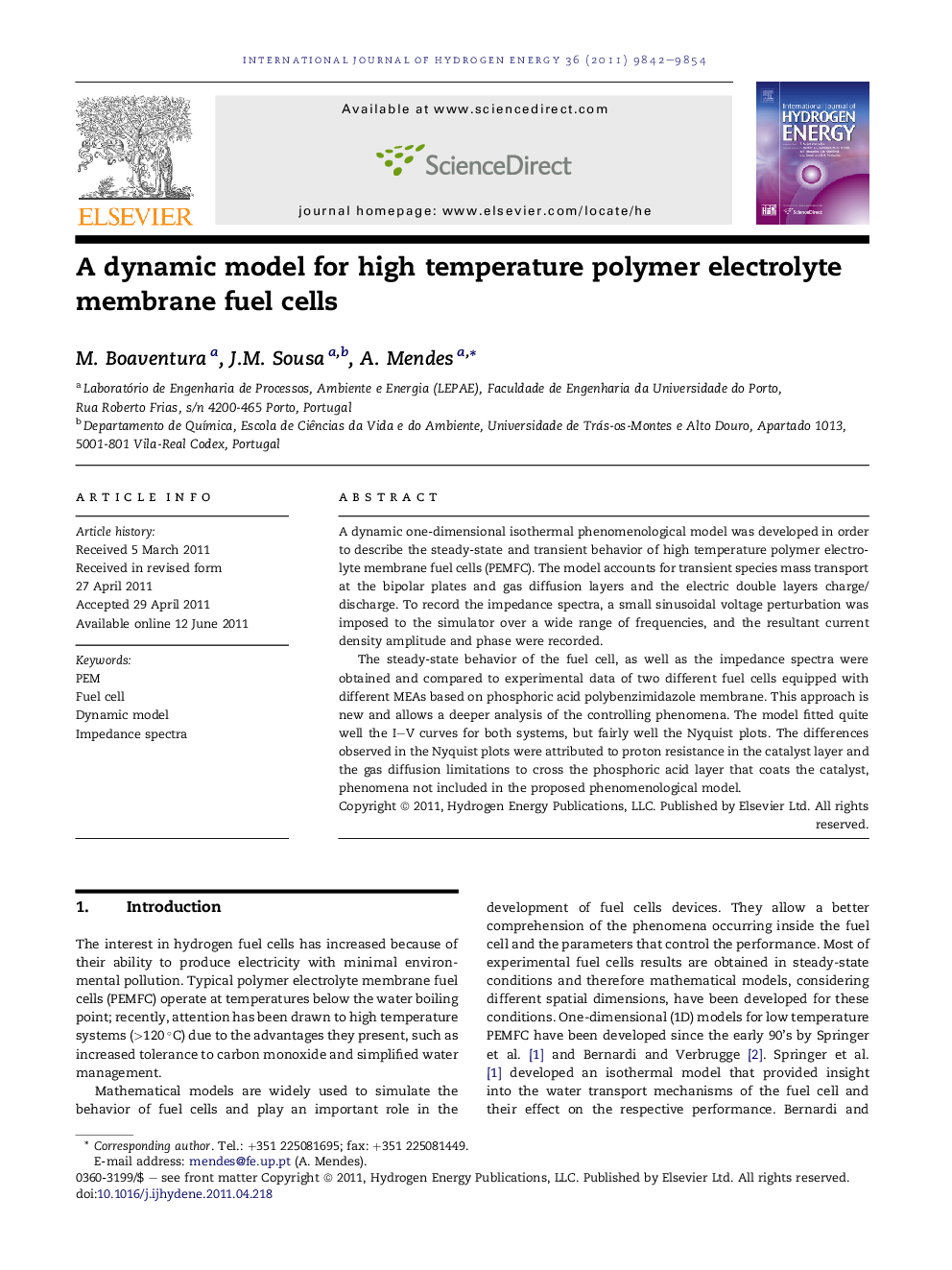| Article ID | Journal | Published Year | Pages | File Type |
|---|---|---|---|---|
| 1278925 | International Journal of Hydrogen Energy | 2011 | 13 Pages |
A dynamic one-dimensional isothermal phenomenological model was developed in order to describe the steady-state and transient behavior of high temperature polymer electrolyte membrane fuel cells (PEMFC). The model accounts for transient species mass transport at the bipolar plates and gas diffusion layers and the electric double layers charge/discharge. To record the impedance spectra, a small sinusoidal voltage perturbation was imposed to the simulator over a wide range of frequencies, and the resultant current density amplitude and phase were recorded.The steady-state behavior of the fuel cell, as well as the impedance spectra were obtained and compared to experimental data of two different fuel cells equipped with different MEAs based on phosphoric acid polybenzimidazole membrane. This approach is new and allows a deeper analysis of the controlling phenomena. The model fitted quite well the I–V curves for both systems, but fairly well the Nyquist plots. The differences observed in the Nyquist plots were attributed to proton resistance in the catalyst layer and the gas diffusion limitations to cross the phosphoric acid layer that coats the catalyst, phenomena not included in the proposed phenomenological model.
► We developed a dynamic 1D isothermal model for high temperature PEMFC. ► A sinusoidal voltage perturbation was imposed to the simulator. ► The steady-state and transient behavior were compared to experimental results. ► The model fitted experimental I–V curves for PBI based MEAs. ► The experimental Nyquist plots were qualitatively well predicted.
